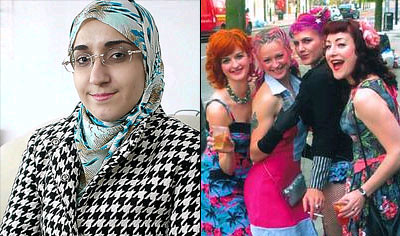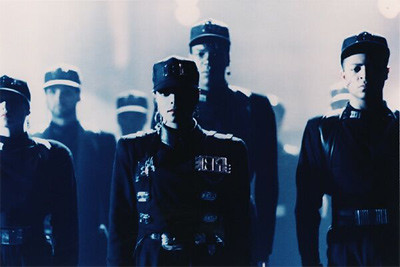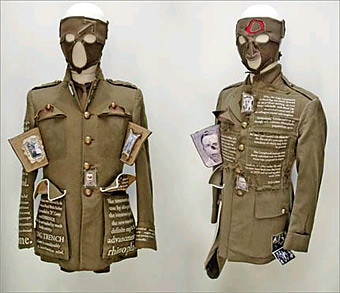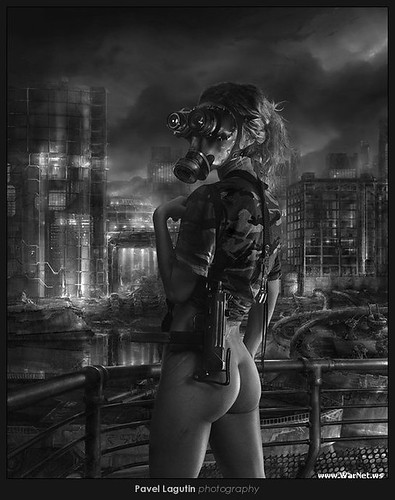When they’re not busy getting butthurt by cartoons or teddy bears, radical Muslim-types rather like spending their time suing employers into compliance with their totally voluntary dress-code. Case in point:

Left: Bushra Noah. Right: Sarah Des Rosiers and Wedge staff.
Sarah Des Rosiers, owner of alternative hair salon Wedge, has been ambushed with a frivolous lawsuit by one Bushra Noah on grounds of religious discrimination, after dismissing Noah from a trial position at her hair salon. You see, Noah, a self-described ‘devout’ Muslim, didn’t think it was important to mention in her telephone interview that she wore a headscarf, even though she admits that this is the reason she believes she had been turned down for hair-styling jobs in the past. Needless to say, when she rocked up to work she was requested to uncover her hair while at the salon, but she refused on grounds that it was ‘immodest’.
That’s right. A hairdresser who finds uncovered hair immoral.
Having been turned down by no less than twenty-five other salons, presumably for the same reason, Noah decided she’s had enough and set about destroying the business that Des Rosiers had poured her soul into.
Posted by Mildred Von on December 11th, 2007
Filed under Hair, Madness, Serious Business, Silly-looking types, Testing your faith, Uniform | Comments (28)

I didn’t even know there was such a thing as industrial music when I stumbled onto Janet’s Rhythm Nation 1814 film in my pre-teens, but I knew that I’d made a very important discovery. Later there would be the mix tapes and the radio shows that exposed me to my favorite music in its true form, but until then, isolated in suburbia and still learning English, Janet’s video was my first glimpse into the aesthetics of my favorite musical genre.
Having re-watched Rhythm Nation today, I have come to a very important conclusion: Janet Jackson is even more ÜBER than I initially thought. Here’s why:
- The uniforms! God, the uniforms. Those gloves with the riveted metallic plates? Hot.
- “We are a nation with no geographic boundaries, bound together by our beliefs.” NSK State, anyone? Laibach, take note: Janet beat you to it by 4 years.
- The precise, mechanical dancing that looks like military formations puts the type of industrial dancing that you see at today’s clubs to shame.
- The entire clip takes place in a steamy factory that recalls Test Dept’s Total State Machine.
- Despite the strong percussion and electronic elements, I’d be pushing it if I claimed that this awesome song was industrial. But you know what? Janet created this socially-conscious record on her terms, in the face of a record company pressuring her to only sing about love and relationships. Who knows what this could have been, had there not been that pressure at all?
Posted by Nadya Lev on October 26th, 2007
Filed under Dance, Faboo, Film, Industrial, Music, Sexuality, Stroke Material, Uber, Uniform | Comments (15)

Paddy Hartley Project Facade, originally uploaded by Coilhouse.
Project Facade tells “the personal and surgical stories” of servicemen who sustained deforming injuries during World War One. The site displays the uniform sculptures as components of thoroughly-researched case studies that include the name, face and injury catalogue of each soldier, presenting a sculpture that’s unique for each man’s story. The most detailed case studies belong to Sea. AJ, Fai. W, and Top. V, though all are worth examining. Warning: there are images of facial deformities here that are not for the weak of heart!
Some uniforms are fragmented with blood-red stitching reminiscent of shrapnel wounds, others are inscribed with writing that conjures medical records or letters from loved ones, and many uniforms are complemented by stiff masks that project power and authority while hiding a the personal horror of a face literally erased by war. The project is two-fold: in addition to examining the history of facial/body reconstruction with the aforementioned uniform sculptures, Hartley also investigates modern techniques by creating Bioactive Glass Facial Implant sculptures, comparing today’s technology to the surgical techniques that Sir Harold Gillies pioneered in the early 1900s. The result is a powerful artistic response to the history of facial reconstruction, as experienced both by the patient and as the surgeon.
Posted by Nadya Lev on August 20th, 2007
Filed under Art, Medical, Uniform, War | Comments (2)
Posted by Zoetica Ebb on August 5th, 2007
Filed under End of the World, Photography, Sci-fi, Uniform, War | Comments Off on nuclear holocaust






